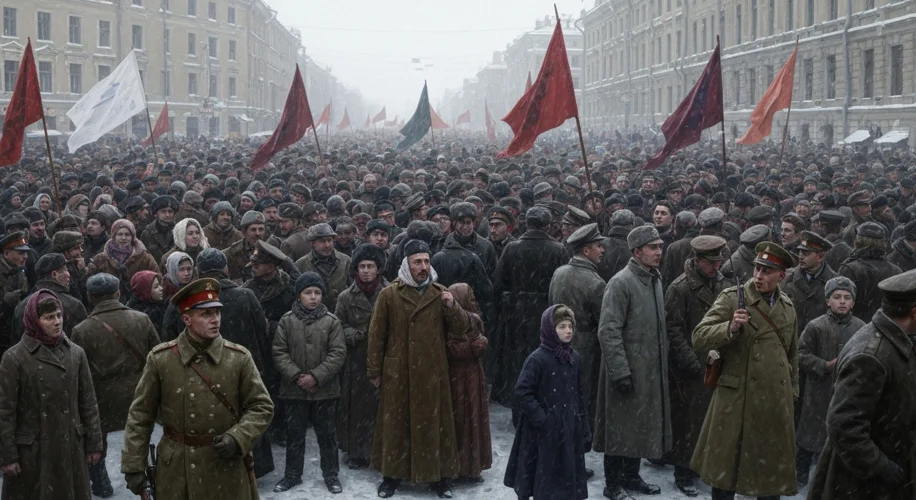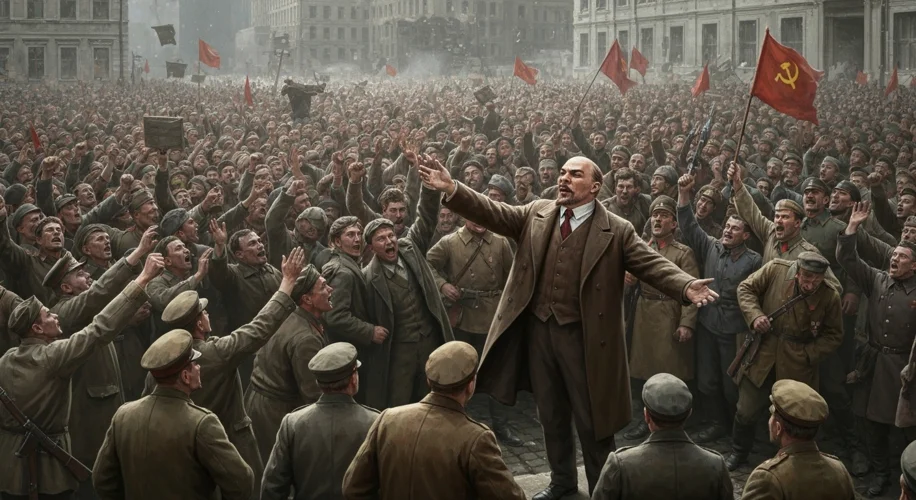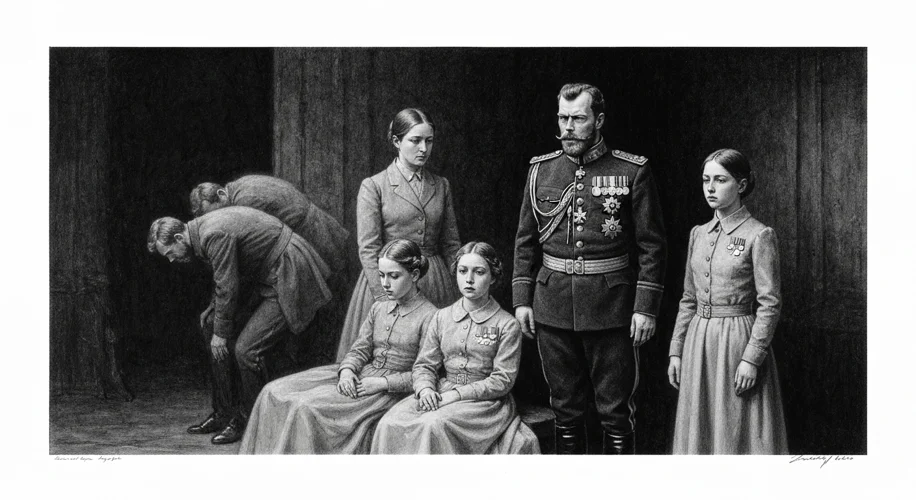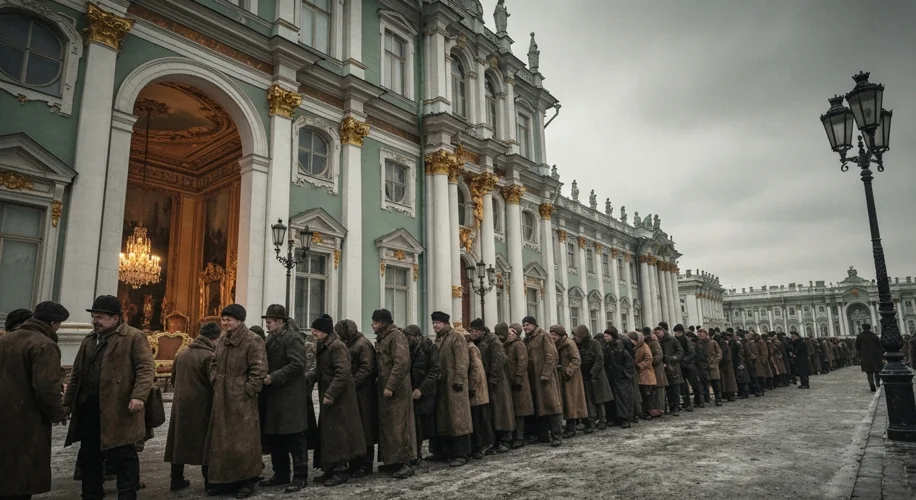The year is 1917. The world is engulfed in the inferno of the First World War, and in the vast, sprawling Russian Empire, a nation already simmering with discontent is about to boil over. For centuries, the Romanov dynasty had ruled with an iron fist, an autocratic monarchy presiding over a land of stark contrasts: opulent palaces for the elite, and crushing poverty for the masses. But the pressures of war, coupled with deep-seated social and economic grievances, were about to tear it all down.
Imagine the scene: Petrograd (now St. Petersburg) in February. Bitterly cold, with bread lines stretching for blocks, and soldiers returning from the front, disillusioned and weary. The Tsar, Nicholas II, was far removed from the suffering, clinging to his absolute power while his empire teetered on the brink. The war effort was a catastrophe; Russia was losing men, territory, and any semblance of public faith. Rumors of corruption and the “mad monk” Rasputin’s influence over the Tsarina further eroded public trust.

The dam broke on International Women’s Day, February 23rd (March 8th by the modern calendar). Women, tired of hunger and the loss of their sons and husbands, took to the streets. Their protests, initially about bread, quickly morphed into calls for an end to the war and the autocracy. Soon, factory workers and other citizens joined them. The critical moment arrived when soldiers, ordered to fire on the crowds, instead turned their guns on their officers, or simply laid them down. The Tsarist regime, built on military might and blind obedience, had collapsed from within.
This was the February Revolution. Nicholas II was forced to abdicate, ending 300 years of Romanov rule. A Provisional Government was formed, promising reforms and a path towards democracy. But this new government was weak, indecisive, and, crucially, chose to continue Russia’s involvement in the disastrous war. This was a fatal misstep.
Simultaneously, a parallel power emerged: the Soviets. These were councils of workers’ and soldiers’ deputies, born out of the revolutionary fervor. The most powerful of these was the Petrograd Soviet, which commanded significant influence. Into this volatile mix stepped Vladimir Lenin, a revolutionary exiled for years, brought back to Russia by the Germans who hoped he would destabilize their enemy. Lenin, leader of the Bolshevik faction of the Social Democratic Labour Party, arrived with a clear, electrifying message: “Peace, Land, and Bread.” He promised an immediate end to the war, land for the peasants, and food for the starving cities. His slogan resonated deeply with the war-weary population.

The Provisional Government’s inability to address the nation’s core needs created a vacuum that the Bolsheviks, under Lenin and the brilliant strategist Leon Trotsky, were poised to fill. In October (November by the modern calendar), the Bolsheviks, armed with their promises and organized Red Guards, launched their own revolution. This was not a mass uprising like February, but a more calculated seizure of power. The Winter Palace, seat of the Provisional Government, was stormed with relative ease. The Bolsheviks declared themselves the new power in Russia.
But the revolution was far from over. The Bolsheviks’ seizure of power plunged Russia into a brutal civil war (1918-1922) between the Red Army (Bolsheviks) and the White Army (a diverse coalition of anti-Bolshevik forces, supported by foreign powers). The conflict was savage, marked by famine, terror, and immense bloodshed. The Romanovs themselves met a tragic end, executed by the Bolsheviks in 1918 to prevent their rescue.

Ultimately, the Red Army, under Trotsky’s military genius, triumphed. The Bolsheviks solidified their grip, and in 1922, the Union of Soviet Socialist Republics (USSR) was officially established. The revolution had fundamentally reshaped not only Russia but the course of 20th-century history. It inspired communist movements worldwide, fueled the Cold War, and demonstrated a radical alternative to capitalism and traditional governance. The echoes of 1917, a year of fire, blood, and radical transformation, continue to reverberate through our modern world.

